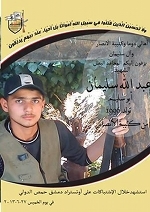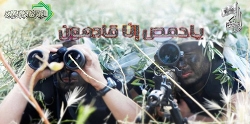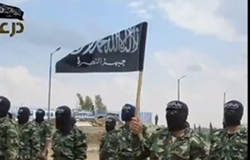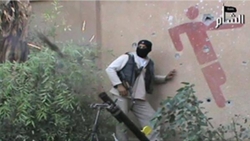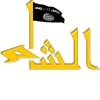Having an idea of the forces fighting on the battlefield in Syria is crucial to understand the state of play, to follow the course of the war, to evaluate the impact of the decisions taken by external players, and to estimate the likelihood to see one scenario (or one of its variations) happening. To obtain the best possible understanding of the theater of war other elements such as training, armament*, command and control situation, etc. should ideally also be considered. Yet, fighting women and men remain a crucial and foremost component.
Here is a synthesis of the various estimates found for each warring group, as it is only when they are seen together that they take their full meaning. Before to enter into details for each group, the graphics below (click on an image to enlarge) aim first at summarizing and representing visually the relative scale of the various forces. Second, those forces are seen in the light of a Syrian population that would have grown increasingly divided along sectarian lines by the war, with consequences in terms of creating a future peace as well as in terms of strategies of mobilization and “population control”.




How many fighters belong to the Supreme Joint Military Command Council (SJMCC or SMC)?
Moderates or all opposition forces
This is a crucial question, however a very difficult one. If we use David Ignatius estimates for the Washington Post, we read that “Idriss and his Free Syrian Army command about 50,000 more fighters, rebel sources say” (Ignatius, 3 April 2013). Lund (4 April 2013), in his comment on Ignatius’ article for Syria Comment, questions this estimates, considering the complexity and fluidity of the situation on the ground. O’Bagy, in her detailed report on the FSA does not include a global estimate.
Lund in his article on the FSA (16 March 2013) underlines that “If all the factions which have declared in favor of Idriss were added up, they’d count at least 50,000 men, perhaps many more.” However, as he stresses, those groups include some that belong too to other nexus, such as Suqour el-Sham that is part of the Syria Liberation Front (SLF) also known as the Syrian Islamic Liberation Front (SILF). Thus, if we are looking at the number of fighters who are “moderate,” then one should substract from the 50.000 all those men who fight first for other groups, and thus are only very loosely affiliated with the SMC.
Keeping this in mind, the International Center for the Study of Radicalisation (ICRS) gives the figure of 60,000 men as “the most conservative estimate for the current [April 2013] size of rebel forces” in his Insight: European Foreign Fighters in Syria. At the opposite end of the spectrum, one finds an AFP article (13 April 2013) emphasizing that “experts say the Free Syrian Army comprises some 140,000 fighters”, but without mention of any source.
We should also consider all those small groups that are mainly local (see here), as it is not clear from given estimates if they are counted or not.
What happened to the defectors?
When trying to find estimates for the FSA and the SMC, counting forces seems to have proceeded according to two stages.
At the beginning of the war, during 2011 and part of 2012, observers and students of the Syrian war were focusing on defectors from the Syrian Army, who led the creation of the Free Syrian Army on 23 September 2011, under the leadership of Colonel Reyad Mousa Al-As’ad. Defectors, both soldiers and officers, were meant to join the FSA, which would constitute the core of the new security forces after the fall of the Al-Assad regime.
However, as underlined by O’Bagy (Ibid: 10-11), using a New York Times article (Liam Stack, 27 October 2011), one of the many problems the FSA had to face was that the command group led by Reyad Mousa Al-As’ad defecting officers were kept in an “officer’s camp” in Turkey that was located far away from the Syrian battlefield. This led to a disconnect between fighting troops and command. Meanwhile, most probably, many soldiers and officers defecting must have joined the forces on the ground. In the same New York Times article, Colonel Al-As’ad “would not specify the number of fighters, saying only that it was more than 10,000, and he was unwilling to disclose the number of battalions, claiming that the group had 18 “announced” battalions and an unspecified number of secret ones. None of his claims could be independently verified.”
This figure of 10,000 would correspond to the estimated number of defectors given by “an American official” on 26 October 2011 (Nada Bakri, Defectors Claim Attack That Killed Syria Soldiers, NYT) and by “sources” (“Western Intelligence agencies”?) in a Haaretz’ article by Avi Issacharoff and Amos Harel on 21 December 2011. However, by December 2011, Colonel Al-As’ad claimed that the FSA now counted 20,000 fighters (Safak Timur, AFP, Dec 1, 2011). The uncertainty regarding numbers is well summarized by a 2 December 2011 AlJazeera article: “The group is now believed to number between 1,000 and 25,000 divided over 22 battalions spread across the country.”
Then, observers stopped focusing on defectors and tried to give estimates for the troops fighting more or less loosely under the SMC, the FSA or as “opposition forces”.
Defectors, whatever their number, most probably joined not only the FSA or the SMC according to the time of defection, but also mobilizing or fighting groups according to their family, geographical and religious allegiances and to the fate of the overall force. The less the “structuring” command and control “center” has to offer (including in material terms, such as weapons, logistics etc.), the less it can show its power and strength, the more likely fighters will join or rather give a stronger allegiance to other factions. For example, as reported by Mona Mahmood and Ian Black for the Guardian (8 May 2013), FSA troops have increasingly defected to Al-Nusra during the first part of 2013 (note that defections to salafi-jihadis may be both real and hyped as bargaining chip to obtain more from external support).
Pro Al-Assad regime Forces
Syrian Forces
The pro-Assad Syrian fighting groups are composed of the regular Army and the Republican Guards, as well as pro-Assad militias (both Alawite and composite – Sunni, Christian, Druze), all backed up by the Security Forces and the Police Force. All Alawites should not be considered as supporting the Assad regime, as shows the conference organised in Cairo on 23 March 2013 by Alawites promoting a “democratic alternative” (Reuters).
The details below are summarized from the excellent report by Joseph Holliday, The Assad Regime: from Counterinsurgency to Civil War (March 2013 for the ISW).
Regular Army and Republican Guards
According to Holliday, Al-Assad has a policy of only “electively deploying [t]his loyal core of military supporters.” As a result ”a working estimate of 65,000 to 75,000 loyal, deployable Syrian regime troops emerges” out of “the Syrian Armed Forces, a basis that includes over 300,000 troops (including Air Force and Air defense personnel)” (p.27). From this figure should be removed casualties, estimated by Holliday at 7620 killed and 30500 wounded by end of December 2012 (see table p.28), which represents approximatively half of the regime estimated deployed troops, partially or completely compensated by recruitment (p.29). As underlined by Holliday and the Interntaional Crisis Group, those men are however a “hardcore nucleus of regime supporters”(p.29). A decentralization of command and control, allowing for flexibility and initiative by low- and mid-level officers, according to local conditions, was implemented during the Summer 2012 (Ibid).
Security Forces: The Mukhabarat
(For a more detailed and clear explanation, read Holliday, Appendix 3) They are constituted of four intelligence services, whose “primary mission was to ‘monitor and intervene aggressively against potential domestic threats to the regime’ (Campbell, 2009).” (p.54) However, they are now acting more like militias than like intelligence services (p.30). In addition, each operates its own prisons. Each service is present throughout the whole territory with a branch in each province. Using an interview he realized, Holliday writes that “one former regime insider suggested it [The Mukhabarat] could be as large as 200,000 security officers and personnel, but this figure could include administrative personnel and informants and cannot be verified” (p. 55), and, most probably, not all of them are fighters. (p.30).
Militias or paramilitary forces
- The shabiha: A network of “Mafia-like organizations,” “made up of mostly Alawite criminal smuggling networks led by members of the extended Assad family” (p. 16), but also from other communities origins, when in areas without an Alawite population (p.17).
- Popular Committees, or Lijan sha‘biya becoming the National Defense Forces, or Quwat ad-Difa‘a al-Watani: “Minority populations who have armed themselves to protect their towns and neighborhoods from anti-government fighters” (p.16). They started being trained and ”formalized” as The National defense Forces, or Quwat ad-Difa‘a al-Watani, in early 2013, with Iran’s support (p.31).
- The “People’s Army” or Jaysh al-Sha‘bi: “Institutional militias” have existed in Syria since the early 1980s (then named munazzamat sha‘biya before it became Jaysh al-Sha‘bi in the mid-1980s) (p.16). The “People’s Army” is composed of the best and most trustworthy fighters found in the previous two groups. It has been “trained and supported by Iran’s Islamic Revolutionary Guard Corps-Qods Force (IRCG-QF) and Lebanese Hezbollah” (p. 30). It was estimated to include 100.000 fighters at the end of 2011 (Holliday using van Dam, 2011, and IISS Military balance 2011). However, Holliday also mentions that Iranian Commander Mohammed Ali Jafari referred to “50.000 popular forces” in September 2012 (p. 30).
As underlined by Holliday, fear, reprisals, massacres and atrocities of minorities at the hand of extremists may only increase the number of people joining the various militias.
Iran’s action with the militias would support Smyth‘s point (2013), according to which Iran is also preparing for a post al-Assad situation by creating sub-networks within the Syrian Shia community, as well as by supporting other (Sunni) militiamen. Holliday suggested a similar Iranian role in a post al-Assad Syria (p.32).
To the Syrian forces must be added foreign groups such as the Lebanese Hezbollah, groups coming from Iraq with Iranian support such the Mahdi Army (Muqtada al-Sadr’s Liwa al-Yom al-Mauwud), Asa’ib Ahl al-Haq, Kata’ib Hezbollah and the Iranian Revolutionary Guard’s Quds Force (Ammar Abdulhamid, 2013; Smyth, 2013).
The Hezbollah
At the end of May 2013, the Hezbollah fighters in Syria have been estimated to reach between 3000 to 4000 troops by the French foreign minister and 7000 troops according to General Idriss (Hezbollah fighters ‘invading’ Syria – rebel chief, BBC News, 30 May 2013).
Meanwhile, the leader of the Lebanese Forces (LF) party, Samir Geagea, estimates that the overall number of Hezbollah fighters does “not exceed 5000 soldiers”, as reported by Elie Hajj (Rethinking Hezbollah’s Role in Syria, 18 June 2013, Al-Monitor Lebanon Pulse). According to IRIB World Service (Iran English Radio), that would be using a NATO report (title and link not mentioned), “the Lebanese resistance group maintains a 65,000-strong army, which is difficult to confront.” (NATO concerned over Hezbollah’s might, 13 January 2013, IRIB).
Those fighters constitute a well trained and serious force. As underlined by Nasser Chararah (Hezbollah’s Youth Strategy, 18 June, 2013, Al-Monitor Lebanon Pulse), “”Hezbollah had gone beyond being a huge militia, becoming a large military and professional force that follows a creative organizational and combat approach. This approach combines organizational conduct subjected to tight control and communications, and elite forces with a rich experience in the various types of guerilla fighting. The most prominent characteristic of this force is that a high percentage of its ranks consist of youth with specialized degrees, making it an educated army.”
Iranian forces
As we saw previously, Iran’s Islamic Revolutionary Guard Corps-Qods Force (IRCG-QF) have been training the People’s Forces since 2011 and most probably used as advisers. Mid-June 2013, according to Robert Fisk, Iran would have decided “to send a first contingent of 4,000 Iranian Revolutionary Guards to Syria to support President Bashar al-Assad’s forces” (Robert Fisk, 16 June 2013, The Independent on Sunday).
Other groups (mainly Shia)
Abu Fadl al-Abbas Brigade
According to Mona Mahmood, and Martin Chulov, “interviews with serving and former members of Abu Fadl al-Abbas (Facebook Page) suggest that upwards of 10,000 volunteers – all of them Shia Muslims, and many from outside Syria – have joined their ranks in the past year alone.” (Syrian war widens Sunni-Shia schism as foreign jihadis join fight for shrines, 4 June 2013, The Guardian).
Iraq’s main Shia militias: Asa’ib Ahl al-Haq, Kata’ib Hezbollah and fighters from the Mahdi Army (Muqtada al-Sadr’s Liwa al-Yom al-Mauwud).
Unknown numbers.
The Forces of the Syrian Kurds
The YPG, People’s Protection Committee, counts between 10000 (interview of Kurdish leader Salih Muslim for the Frankfurter Rundschau, 1 December 2012) and 15000 fighters (“Strategiewechsel der FSA und der islamistischen Kräfte: Krieg gegen Kurden” – no source quoted – 27 May 2013, Die Kurden), according to Wikipedia.
Syrian Sunni factions intending to install an Islamist state in Syria
The Syria Liberation Front (SLF) also known as the Syrian Islamic Liberation Front (SILF) factions (Jabhat Tahrir Souriya or Jabhat al-Tahrir al-Souriya al-Islamiya) would count an estimated 37.000 fighters (Ignatius, 2 Avril 2013; see also Lund’s related comment, 3 April 2013).
The Syrian Islamic Front (SIF) (Al-Jabha al-Islamiya al-Souriya) would count between 10.000 and 30.000 fighters (Lund, 2013: 23).
To those figures should be added the unknown number of fighters belonging to other groups.
Sunni extremist factions with a global jihadi agenda
In November 2012, Washington Post David Ignatius, using sources from the FSA, considered Jahbat Al-Nosra or Al-Nusra (JAN) included “between 6,000 and 10,000 fighters.”
However, other groups fighting in Syria have a global Jihadi agenda. Are those other groups actually included within the count for JAN or not? Furthermore we know of the presence of many foreign fighters. Are the latter counted within the figures given for JAN or not? Most importantly, are those figures increasing or decreasing, and if they are increasing, which populations are mobilized?
This is notably important considering the latest arrival of the Islamic State of Iraq and al-Sham (ISIS) and its coexisting relationship with JAN (see for a summary Lund, 4 May 2013). Aymen Jawad Al Tamimi evaluates the relationships between JAN and ISIS, where they sometimes designate the same entity, but not always, through a meticulous and thorough regional analyses:
- Jabhat al-Nusra and the Islamic State of Iraq and ash-Sham: Deir ez-Zor and the wider east of Syria;
- Jabhat al-Nusra and the Islamic State of Iraq and ash-Sham in Raqqah: Demonstrations and Counter-Demonstrations;
- Jabhat al-Nusra and the Islamic State of Iraq and ash-Sham: Deraa Governorate.
Unfortunately, no estimates of forces that would be specific to ISIS, according to cases are included. It might be very difficult if not impossible to evaluate them.
* as far as weapons and armament are concerned see notably the incredible research work done on Brown Moses ‘s blog.


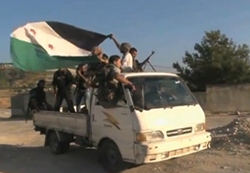
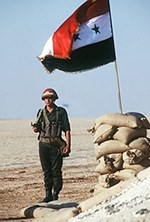
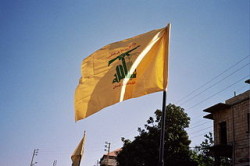
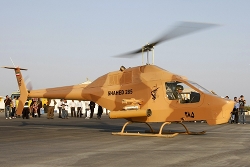
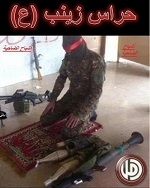
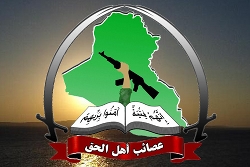
![PYD checkpoint Afrin Syria By Voice of America News: Scott Bobb reporting from Afrin, Syria. [Public domain], via Wikimedia Commons PYD, YPG, Syria, Kurds, Syrian Civil War](http://www.redanalysis.org/wp-content/uploads/2013/07/PYD_checkpoint_Afrin_Syria.png)
